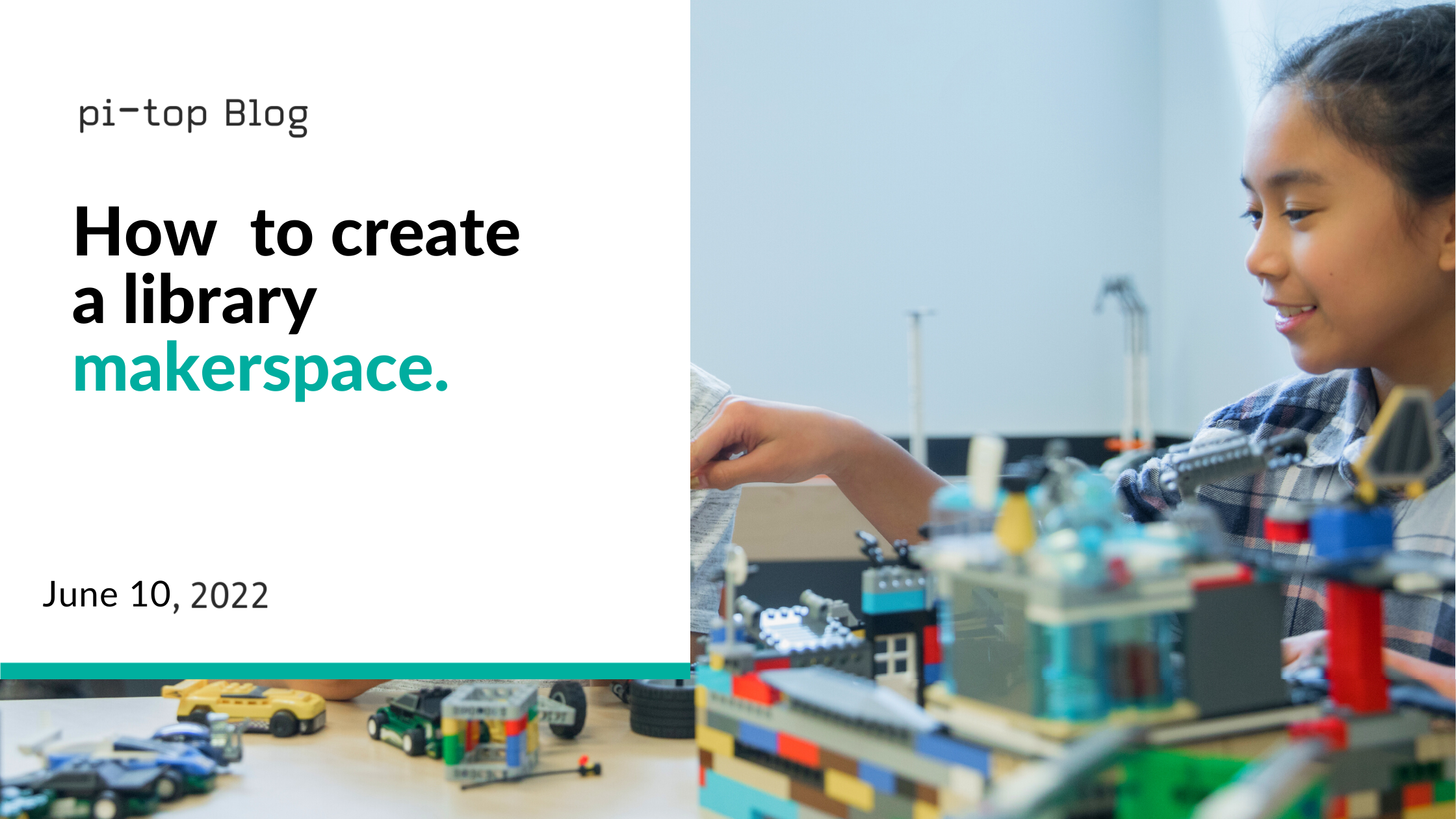According to a recent article published in Bachelors Portal, “When it comes to studies in Computer Science, American universities focus on helping you gain the practical skills required to develop programs and software. As a result, you will have fewer theoretical classes compared to projects and assignments.”
Considering this statement, it is all the more important to engage students in hands-on, problem-solving projects starting from a young age. STEM/STEAM activities make for the perfect opportunity to introduce students to real-world applications and what better way to teach them CS curriculum than through STEM-based projects?!
Library makerspaces, sometimes known as “hackerspaces”, are a great way to integrate CS STEM-based projects into everyday curriculum. Basically, these “hack labs” allow students to set up and work on projects via technology such as 3D printers, computers, and audio/visual equipment. Since the library is generally the hub of the school and has more room for larger tables, students can work by themselves or in a group setting to collaborate and create projects and ideas.
Makerspaces are being set up in libraries all over the world, but the process of establishing one of these places in a school library may be time-consuming and difficult to navigate at times. For librarians and employees who are new to makerspaces, it can be especially daunting.
Here at pi-top, we understand! Let’s look at the two main areas of concern and how to solve these issues.
Solution #1 - Makerspace Budget
I know what many of you may be thinking … ‘these spaces require equipment and technology that we don’t have.’ It is true that many schools simply lack the amount of equipment necessary to produce another ‘space. And in fact, many schools lack the funding to purchase additional equipment.
Considering the importance of technology and CS skills, it is critical that teachers and administration push to gain funding for the technology needs at hand. According to the US Department of Education, “In an ever-changing, increasingly complex world, it's more important than ever that our nation's youth are prepared to bring knowledge and skills to solve problems, make sense of information, and know how to gather and evaluate evidence to make decisions. These are the kinds of skills that students develop in science, technology, engineering, and math, including computer science—disciplines collectively known as STEM/CS”.
Along with the lengthy list of STEM-supported grant opportunities supplied by the US ED, pi-top offers a detailed document that outlines how schools can pursue these grant opportunities to purchase their computer science and STEAM equipment.
Students of all ages and ability levels may benefit from pi-top’s comprehensive computer science solution, which includes everything from introductory coding to expert programming and artificial intelligence. pi-top devices may be used to establish STEAM laboratories in schools in a variety of ways, including:
- Over 150 hours of instruction that is connected to state requirements
- An LMS-integrated course delivery tool for the classroom
- Classroom-proof and portable raspberry pi based computers
- A collection of sensors, lights, speakers, and other gadgets for electrical devices
- A robotics kit that can be utilized at all levels of computer science education, from beginner to expert
pi-top products are matched with numerous federal funding possibilities, enabling schools to pick from several budget categories. With this in mind, there are many options to help you afford the equipment and tools necessary to set up your own makerspace! For more information, check out our recent article “How to Apply for STEM and Computer Science Grant Opportunities”.
Solution #2 - Makerspace Ideas
Once you attain funding, you may be wondering what to put in your makerspace.
To create an innovative space for students to successfully design projects, you will first need to gather technological equipment (which is the most expensive) such as additional computers, audio equipment, and possibly a 3D printer. Don’t panic! With grant money, you should be able to purchase these items with ease!
One important tip is to think ‘baby steps’! Begin with a small 3D printer or maybe just two additional laptops. Also, remember to ask around for any unused items that can be donated. Usually, there is always another teacher or staff member that is willing to give or even loan equipment to help students learn.
The purpose of any makerspace should be to encourage students to think for themselves. Basically, you supply the equipment and tools and encourage them to produce creative inventions. If you make the space, they will come!
One piece of equipment that will give your students loads of engineering options is the pi-top [4]. With it, they can learn the basics of coding as well as create a range of projects from simple electrical systems to robotics! For more Raspberry Pi project ideas, check out this article!
To help give your students a push in the right direction, we have listed some STEM/CS ideas below. And the best part? Most of these do not require super-expensive equipment! Win-Win!
- Dr. Seuss’ The Lorax STEAM Project
- Creative STEAM Projects
- Rover Tunnel Card Project
- pi-top Electronics Kit
- Robotics pi-top Bundles
You can also check out our Further Project Library for additional STEM/CS ideas!
The key to these makerspaces is for students to learn to think critically. As biochemist and former science author, Roger Lewin stated, “Too often we give children answers to remember rather than problems to solve”, it is the educators responsibility to give students the opportunity to brainstorm and create solutions and inventions of their own. And makerspaces allow just that!
